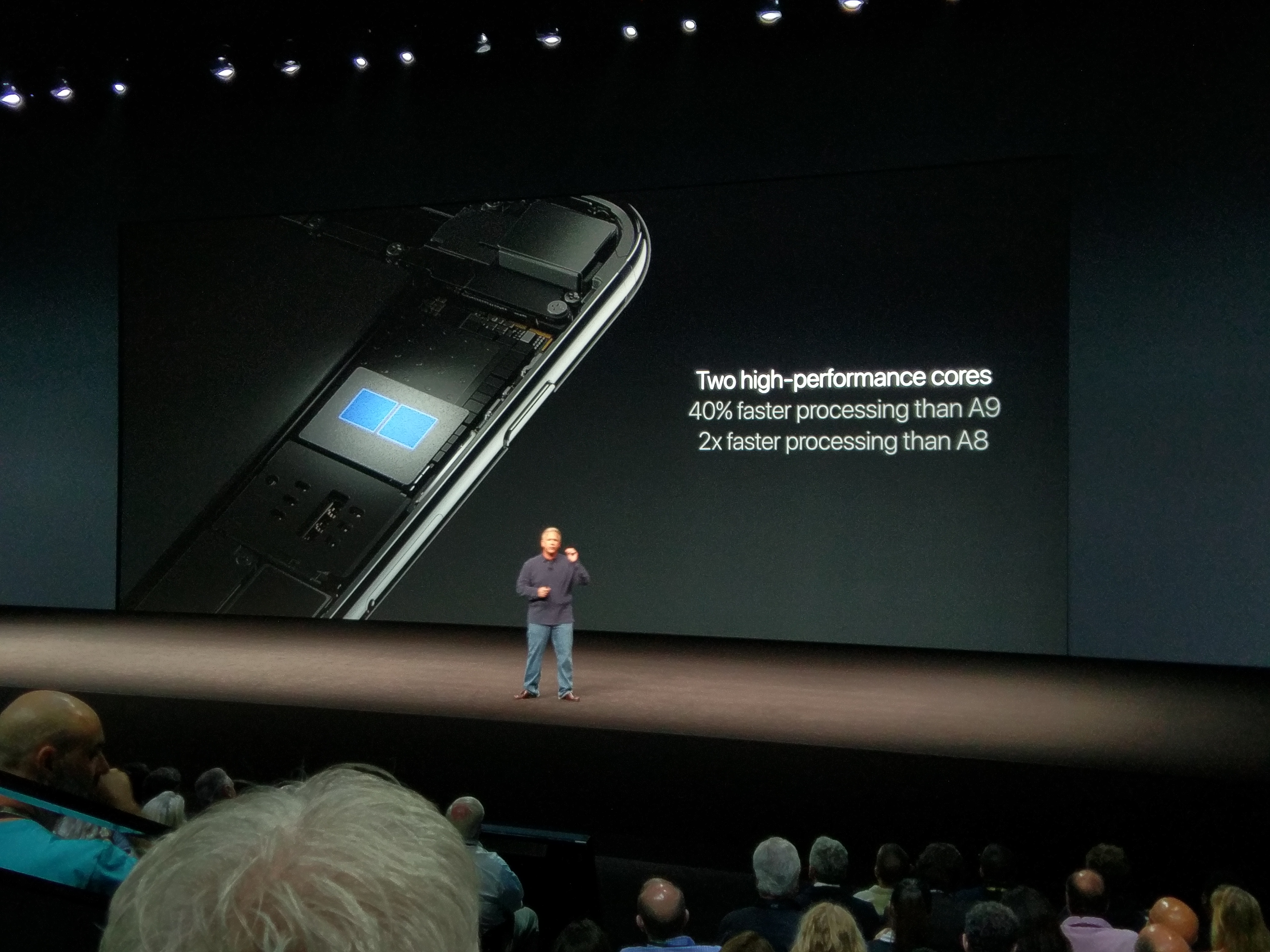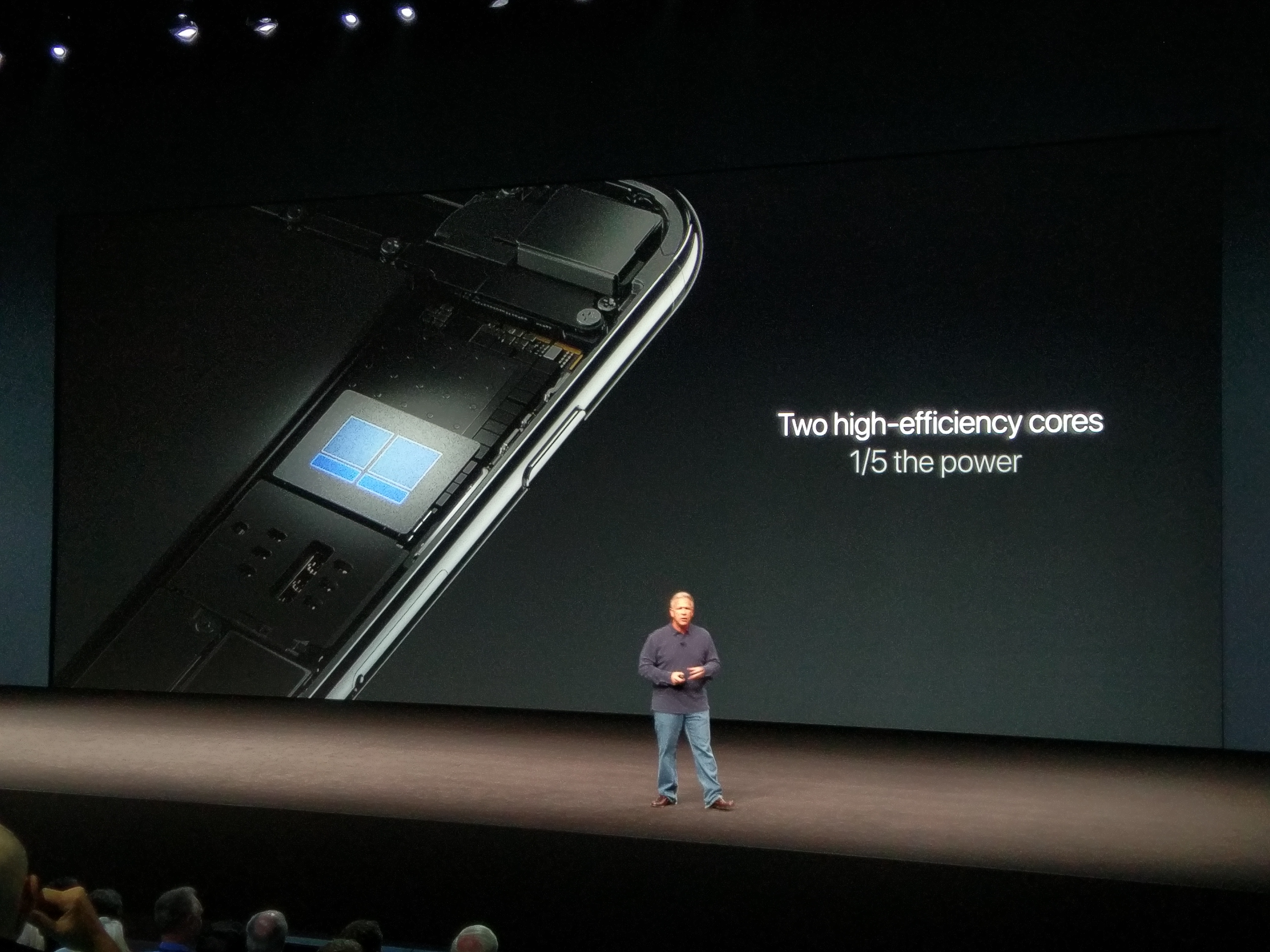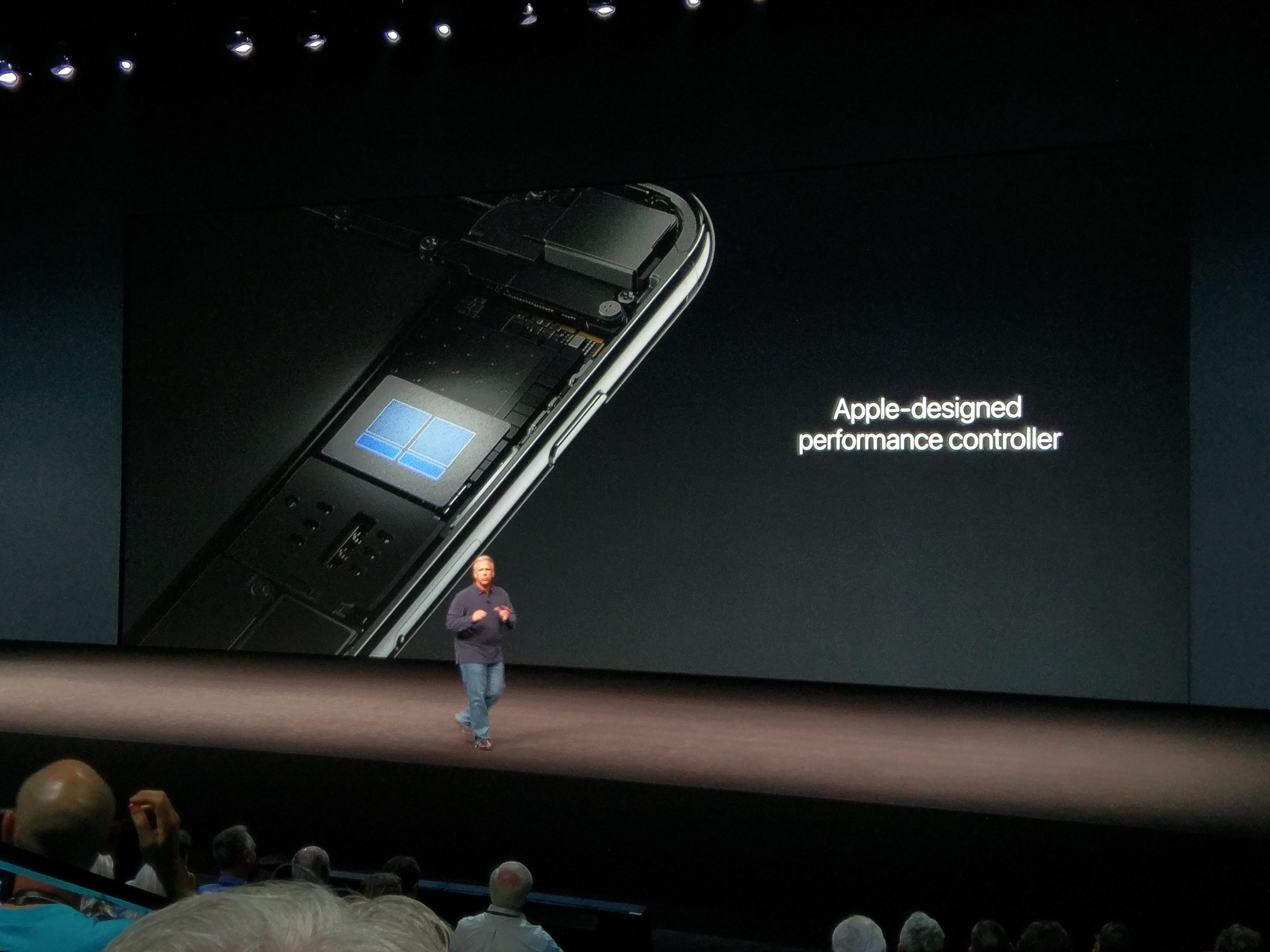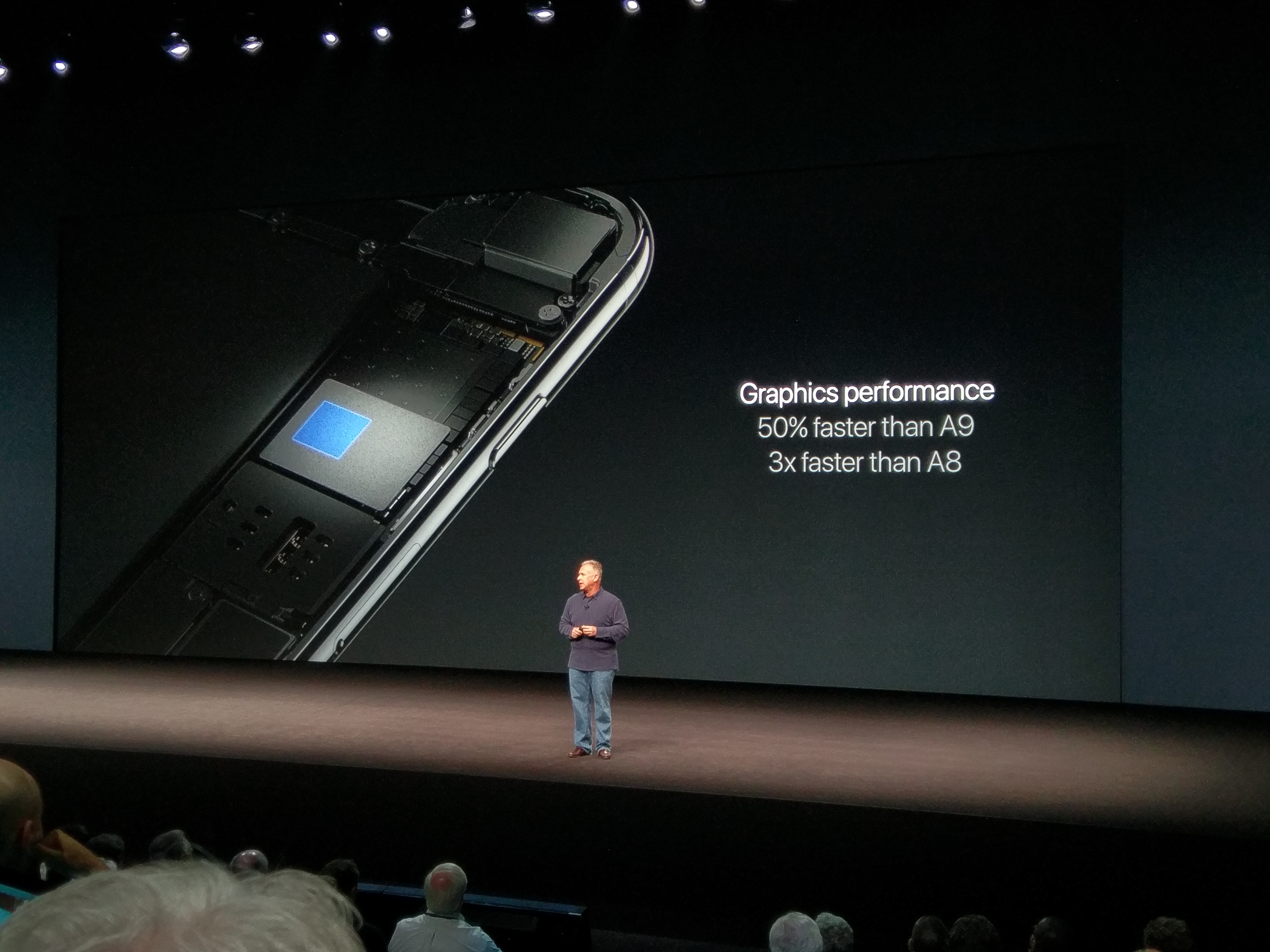iMacmatician
Regular
Apple announced the A10 Fusion at its special event today.




(Pictures from AnandTech.) I'd like to know whether the little cores are Apple-designed or Cortex-A series. (I assume the big cores are an evolution of Twister—not that they aren't also interesting.) The 40% faster performance of the big cores aligns with some clock-for-clock improvements and the rumor of a 2.4-2.45 GHz clock speed.
It was mentioned during the event that the GPU has 6 cores.




(Pictures from AnandTech.) I'd like to know whether the little cores are Apple-designed or Cortex-A series. (I assume the big cores are an evolution of Twister—not that they aren't also interesting.) The 40% faster performance of the big cores aligns with some clock-for-clock improvements and the rumor of a 2.4-2.45 GHz clock speed.
It was mentioned during the event that the GPU has 6 cores.
Last edited:
